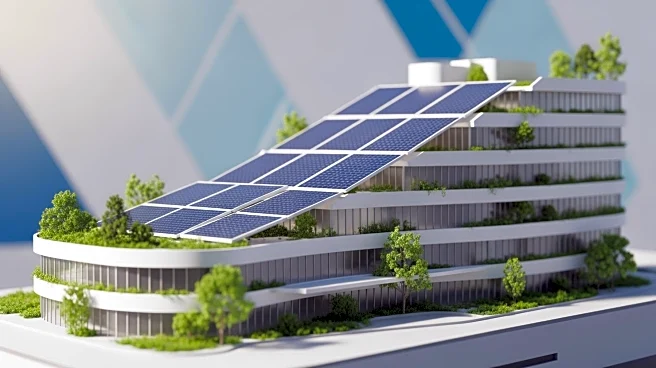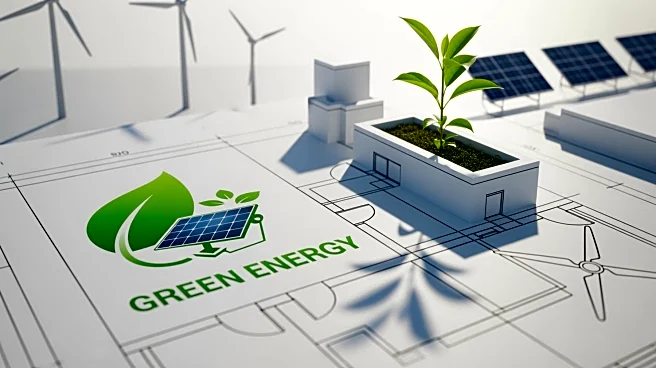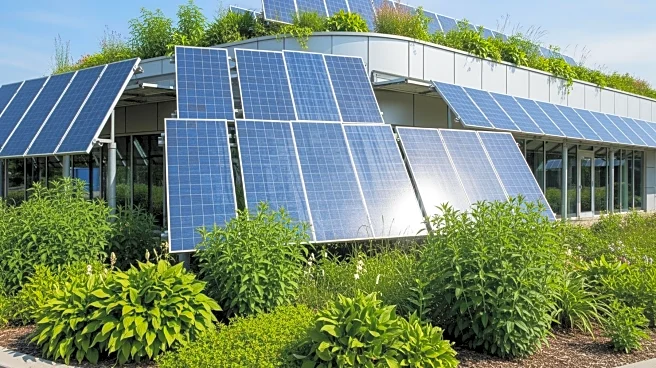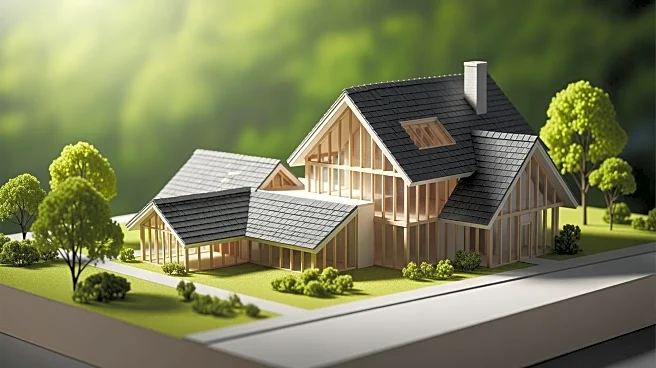What's Happening?
Recent developments in net zero energy buildings are showcasing significant advancements in sustainable architecture. Examples include Swiss houses producing over 600% of their energy consumption and the use of recycled electric car batteries in Dutch
stadiums. These innovations are part of a broader trend towards energy efficiency and sustainability in construction. The integration of solar panels, fuel cells, and regenerative energy systems in buildings and transportation is becoming more prevalent, with initiatives like solar grazing and agrivoltaics gaining traction. These efforts aim to reduce carbon footprints and promote renewable energy use.
Why It's Important?
The push for net zero energy buildings is crucial in addressing climate change and reducing reliance on fossil fuels. These innovations can lead to significant reductions in greenhouse gas emissions and energy costs, benefiting both the environment and the economy. As more buildings adopt sustainable technologies, there is potential for widespread impact on urban planning and energy policies. The shift towards renewable energy sources in construction and transportation can drive economic growth in green industries and create new job opportunities.
What's Next?
The continued development and implementation of net zero energy technologies are expected to expand, with more governments and businesses investing in sustainable infrastructure. Policies supporting renewable energy and energy-efficient building practices may become more common, encouraging further innovation. Collaboration between industries and research institutions could accelerate advancements in sustainable technologies, potentially leading to new standards in construction and urban planning.














